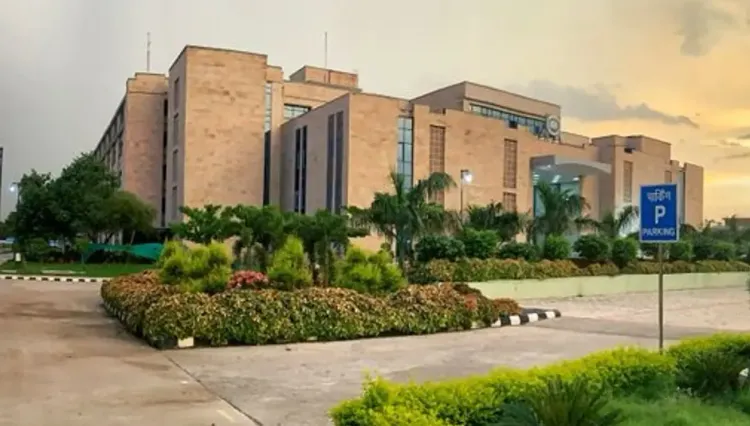What is PAE? AIIMS Bhopal's Safer Approach to Benign Prostatic Hypertrophy Treatment

Synopsis
Key Takeaways
- PAE is a minimally invasive procedure for treating BPH.
- It reduces the size of the prostate without surgery.
- PAE offers significant symptom relief.
- It preserves sexual function.
- The procedure is safe and effective for high-risk patients.
Bhopal, Oct 24 (NationPress) In a significant advancement in medical technology aimed at enhancing patient care, the All India Institute of Medical Sciences (AIIMS) Bhopal has launched an innovative procedure known as Prostate Artery Embolization (PAE).
As per the announcement from AIIMS Bhopal, PAE is a safe and efficient method for treating Benign Prostatic Hypertrophy (BPH), which is often referred to as an enlarged prostate. This technique effectively decreases the size of the prostate without the need for surgery, thereby alleviating various symptoms associated with the condition.
Dr. Rajesh Malik, the Head of Radiodiagnosis at AIIMS Bhopal, elaborated on this cutting-edge method, stating that Prostate Artery Embolization (PAE) has received approval from the American Urological Association (AUA) and adheres to NICE UK guidelines. This procedure has now been integrated into AIIMS Bhopal’s Interventional Radiology Treatment Centre.
“PAE is a minimally invasive approach that focuses on obstructing and diminishing the blood supply to the enlarged prostate, thus reducing its size and relieving symptoms without resorting to surgery,” Dr. Malik explained.
He further clarified that, unlike conventional surgeries, “PAE is conducted through a small puncture in the wrist or groin artery.”
Using sophisticated imaging technology, the interventional radiologist directs minute particles into the prostate arteries, consequently diminishing blood flow and prostate size.
Dr. Malik shared a case involving a 65-year-old man who was significantly affected by urinary issues and was categorized as a high-risk candidate for traditional surgical intervention due to his age.
The patient successfully underwent PAE at AIIMS Bhopal’s Interventional Radiology Centre, with Dr. Aman Kumar performing the procedure without any complications. A few weeks post-treatment, the patient exhibited notable improvement.
“The patient is entirely symptom-free and experiencing an enhanced quality of life. This case highlights how PAE serves as a safe and effective alternative for those unable to undergo surgery, including high-risk patients,” he remarked.
The procedure ensures quicker recovery, eliminates the need for incisions, and maintains sexual function, making it advantageous for high-risk individuals.
“Unlike certain traditional surgical options, PAE generally does not lead to sexual dysfunction, such as erectile or ejaculatory issues,” Dr. Malik added.










